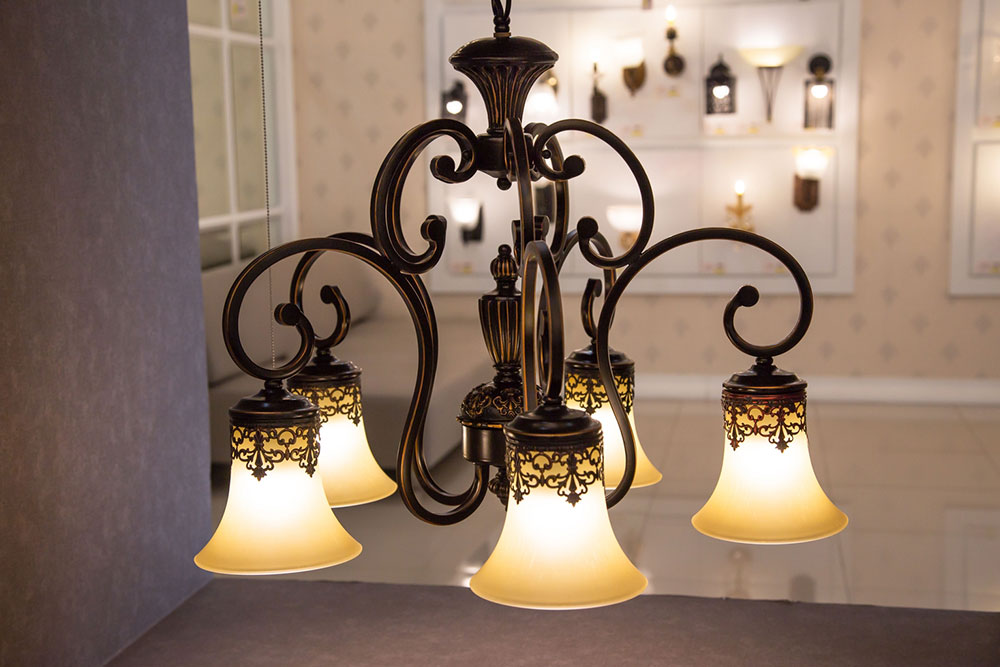8 Tips to Buy the Right Chandelier
W hile interior decoration has evolved significantly with time, chandeliers continue to find a place in many homes. These versatile fixtures help enhance a room’s aesthetic appeal and create a luxurious ambiance. Since luxury chandelier lights are available in various designs and sizes, one should research and not buy hastily. To find the right one, individuals must consider several factors, such as where they w ant to install the fixture, its wattage requirements, and the manufacturer’s reputation.
1. Determine the right location for the chandelier
Placement is important as it can affect the chandelier’s visual appeal. An effective way to find the right spot is to use key architectural elements, such as an arched entryway, an elegant dining area, a plush sofa set, and French windows, as a guide.

2. Select the type of chandelier
The next step is to decide what type of chandelier to buy. This decision should depend largely on the location chosen and the home’s architectural designs. For example, a contemporary LED chandelier may not suit a room with vintage aesthetics.
3. Consider the chandelier’s ideal size
The size of a chandelier should be determined by the size of the room in which it needs to be installed. To obtain its ideal diameter, one must measure the length and width of the room and total these figures. For instance, if the room measures 12 feet by 16 feet, the fixture should be roughly 28 inches in diameter. One could also consider the furniture set that lies below the chandelier to determine its ideal size. For example, chandeliers installed over dining tables should be about half to two-thirds of the table’s width.
4. Check the bulb quality and wattage
No matter how elegant a chandelier may be, its radiance solely depends on its bulbs. So, individuals should always check the wattage and quality of the bulbs before buying. Choosing ones with adjustable brightness and high energy efficiency is advisable. That said, these features should not compromise their visual appeal. If possible, it’s also best to buy a chandelier with the bulbs concealed. If the bulbs are exposed, one should consider installing a dimmer so the lights aren’t too bright.
5. Don’t overlook the chandelier’s finish
The finish of a chandelier can make or break its visual appeal and integration with the room’s decor. So, one should always test the chandelier carefully to examine the finish and the type of metal used for it . For instance, if one has brass accents in their room, a brass or chrome finish or a wrought-iron chandelier would suit best.
6. Compare the features and prices
While a particular chandelier may seem perfect for a room, it’s best to hold on and check out other options as well so that one doesn’t miss out on a better deal. Comparing the features and prices of different chandeliers by a particular brand as well as those by different brands helps pick the best option for a room. It also enables one to understand how much a chandelier of a particular size and type costs on average and invest in something that’s the most elegant yet cost-effective.
7. Look for companies that offer installation services
The process of buying a chandelier doesn’t end with the purchase; installation is an essential step that can lead to a major loss if not done right. So, it’s best to look for brands and dealers who not only offer premium chandeliers but also provide installation services.
8. Check the warranty options
A chandelier dealer must offer a warranty period of at least one year so that the buyer is financially compensated for any defects or damages during this time . This way, buyers can mitigate financial losses.
When buying a chandelier, one should check the size, type, and cost and go for one that perfectly balances all these features. Individuals should also research the dealer or brand’s reputation, read online reviews, and consult family members and friends. When buying a chandelier online, one should ensure it is properly packaged and that the company bears the entire cost in case of any damage to the product while it’s in transit.
